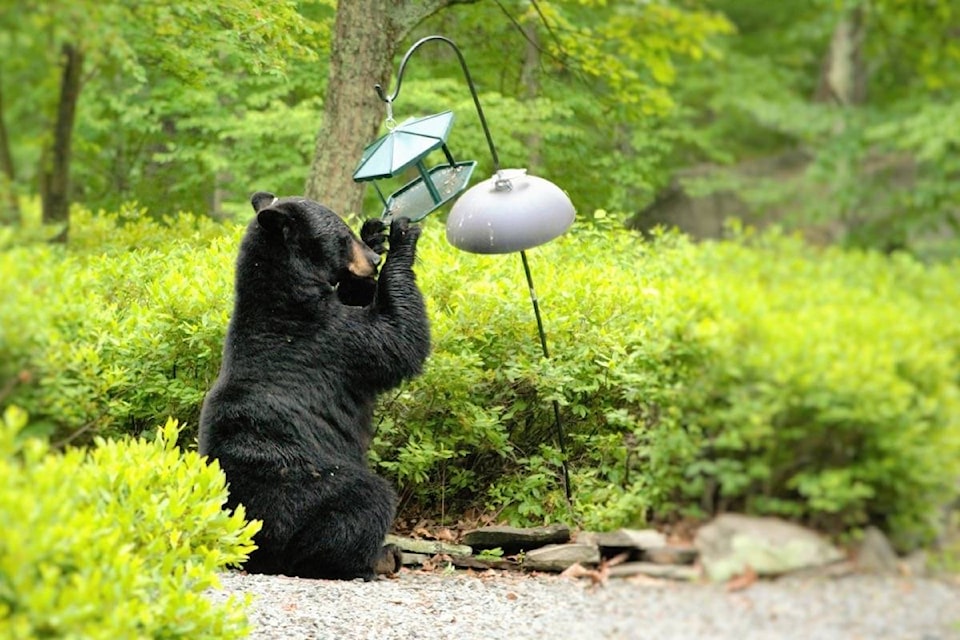This year’s spring—cold and damp until recently—is virtually a repeat of last year’s, says Frank Ritcey, provincial coordinator for WildSafe BC, but that doesn’t mean bears aren’t already out and about, looking to fatten up after winter. A lack of natural food, however, means that they’ll be in search of other food sources, making the attractants humans provide a tempting target.
“The bulk of the bears won’t be out for another two to three weeks; we usually see them come out around the first week of May, but bears are coming out now,” says Ritcey. “There’ve already been a couple of bears sighted in Kamloops, and there is a sow with cubs near town that we’ve been watching. It’s a concern; we want people to give them a lot of room, so they’ll sleep until it’s time for them to come out.”
Bears should not be coming out of hibernation until there are natural foods available for them, but Ritcey says there isn’t much out now for them. “There’s not a lot of grass out because of the cold, wet spring, and if there’s no natural food bears will look for the food humans provide.”
One prime attractant for bears is bird seed. “Bird feeders are a big issue at this time of year. Birds are getting enough natural food, but people forget their bird feeders are out, and they attract bears. And calories like that attract more than just bears,” such as rodents and raccoons, which in turn attract larger predators. “Everyone likes to get at bird feeders.”
Ritcey says that it is too soon to say how last year’s wildfires will affect bears’ natural food sources. “There may be some issues near where the fires were. If the fire burned quickly but not too hot you’ll have good grass growth, but in places where it burned really hot nothing grows. It will depend on how fast the fire went through and what sort of vegetation was there before. Some is fire resistant, and some isn’t.
“Fire can help in some places, but cause issues in others.”
Quite often, he says, reports of early bears in the Ashcroft area show that the bears have been attracted by garbage. “It’s really important to manage your garbage. If it’s really smelly, double bag it and freeze it until garbage day; don’t put it outside, where it will attract all sorts of wildlife. And keep all your garbage inside until the day of collection.”
Bears aren’t the only local creatures coming out of hibernation. Rattlesnakes will be starting to emerge as soon as the hotter days are here; until then, says Ritcey, they’ll hang around their dens until it’s warm enough to make a mass exodus.
“When snakes are on the move, give them space,” he advises. “They’re a protected species. And you’re unlikely to be bitten by a rattler. They don’t want to waste their venom on you; they’d rather bite something they can eat. Unless you pick one up or step on it, it won’t try to bite.” He says hikers and walkers should watch out for rattlesnakes, especially when stepping over logs and other obstructions. He advises stepping on top and looking to see what’s on the other side, to make sure there isn’t a snake lying there.
“They’re an important part of the ecosystem. They control the rodent population. The more species we have in the landscape, the better that landscape is doing.” When you see a rattlesnake on the road or in the wild, he says “Brake for the snake, and don’t use a rake.”
editorial@accjournal.ca
Like us on Facebook and follow us on Twitter
